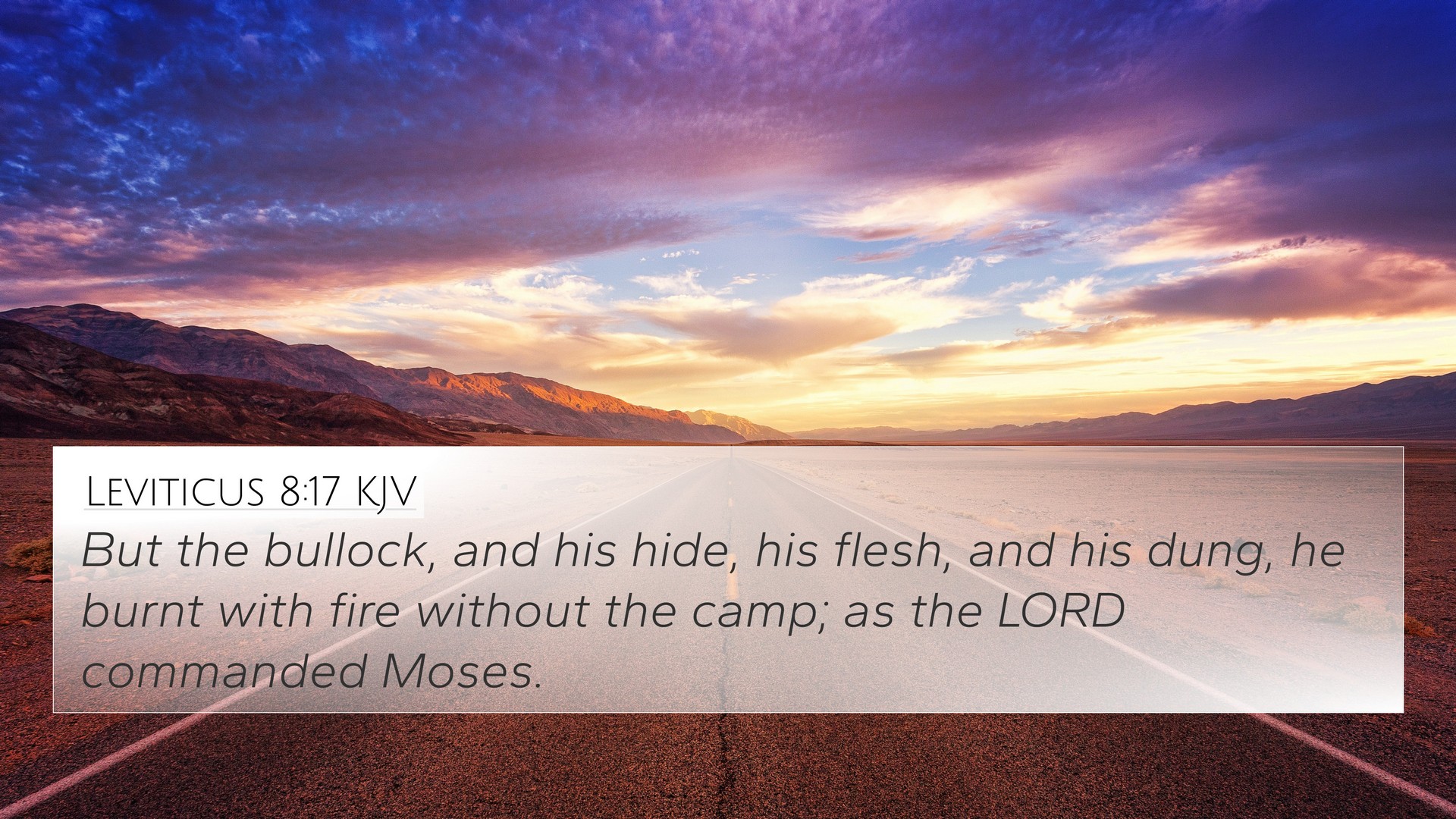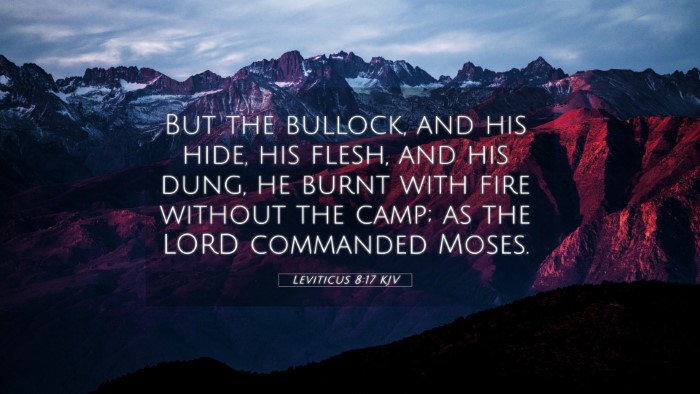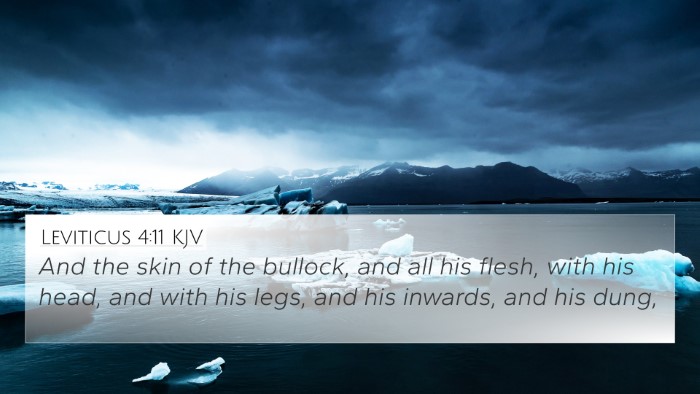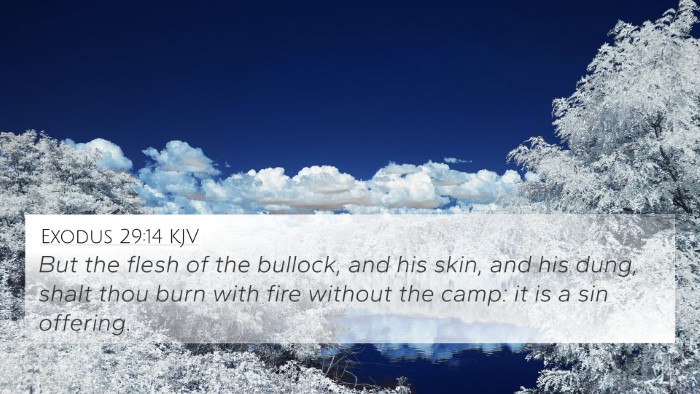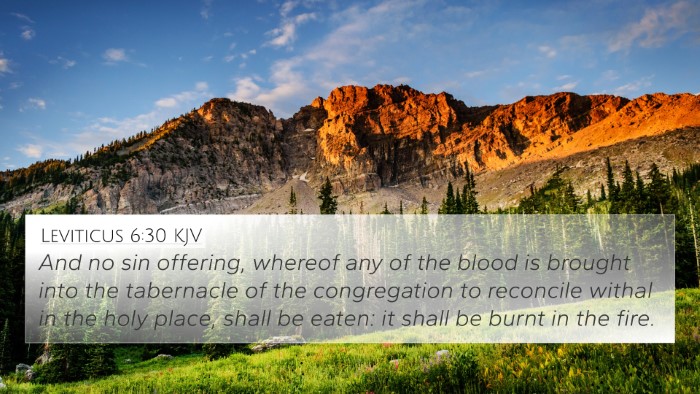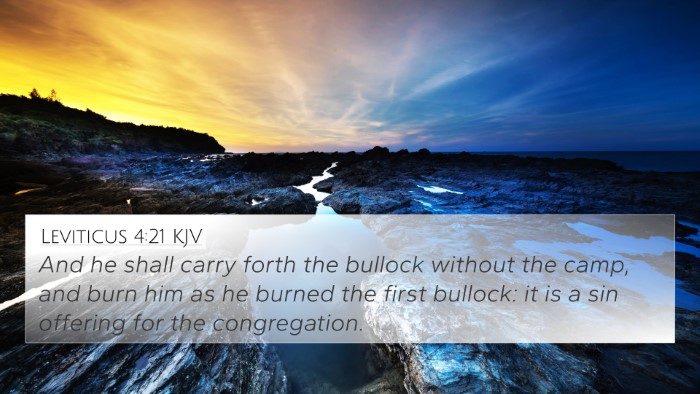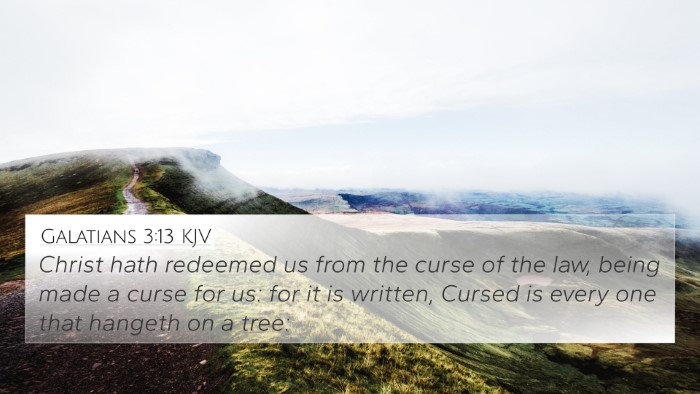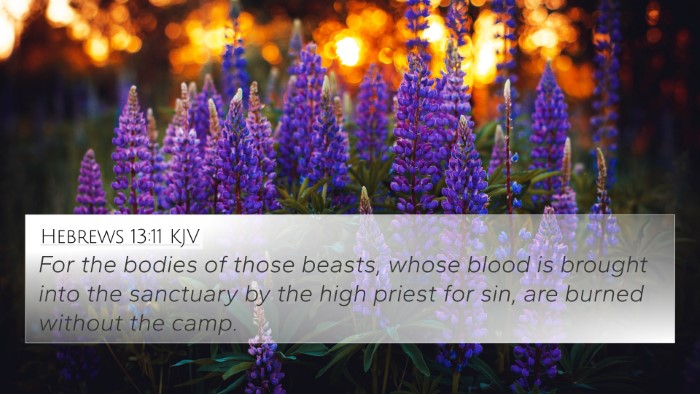Leviticus 8:17 reads: "But the flesh and the skin and the dung thereof he burnt with fire without the camp, as the Lord commanded Moses." This verse highlights the process of consecration in the context of the sacrificial system established for the priests. Below, we will explore its meanings through insights from notable public domain commentaries.
Understanding the Context
Leviticus 8 describes the ceremonial ordination of Aaron and his sons as priests. This chapter, situated in the Mosaic Law, provides critical insights into the significance of offerings and purification rituals that marked the initiation into priestly service.
Significance of the Sacrifice
-
Symbolism of Sacrifice:
According to Matthew Henry, the act of burning the flesh, skin, and dung signifies the total dedication of certain offerings to God. This act symbolizes the elimination of sin and impurity, showing how the sacrifice is a means of atonement. The specifics of burning these elements outside the camp signify the separation of sin from the community.
-
Fulfillment of Command:
Adam Clarke emphasizes the obedience of Moses in performing the divine command. Following God's instructions meticulously illustrates the importance of adhering to divine will in sacred practices. This act sets a precedent for the seriousness with which God views the worship and separation from sin.
-
Consecration and Purity:
Albert Barnes notes that the actions taken here reflect a deeper spiritual lesson regarding holiness and the need for purification before approaching God. The priesthood’s initial offerings involved a symbolic cleansing, vital for their role as mediators between the people and God.
Cross References
This verse resonates with several others throughout scripture that discuss the themes of sacrifice, holiness, and obedience:
- Hebrews 13:11-13: Discusses the significance of sacrificial offerings and their connection to Christ's sacrifice.
- Exodus 29:14: Emphasizes the burning of certain parts of the offering as a sign of sin being removed from the community.
- Leviticus 4:11-12: Outlines the instructions for handling parts of the sin offering, reinforcing the concept of separation from sin.
- Numbers 19:3: Relates to the binding nature of ritual purity and its importance in community worship.
- 1 Peter 2:5: Connects the priesthood of believers to the sacrifices being offered and accepted by God.
- Isaiah 53:10: Discusses the Lord's pleasure in offering Christ as a sacrifice for sin.
- Acts 20:28: Highlights the sacrificial nature of Jesus’ death and its implications for the church.
Thematic Connections
The themes explored in Leviticus 8:17 echoes throughout the Bible, illustrating vital connections between sacrifice, obedience, and the consecration required for communion with God. These themes come to fruition in the New Testament through the ultimate sacrifice of Jesus Christ and His call for believers to live consecrated lives.
Conclusion
In conclusion, Leviticus 8:17 is emblematic of the sacred tradition of sacrifice and purification. Through careful study and cross-referencing with other scriptures, we discern a continuous narrative of God’s call for holiness, the necessity of sacrifice, and the profound obedience required of His people.
